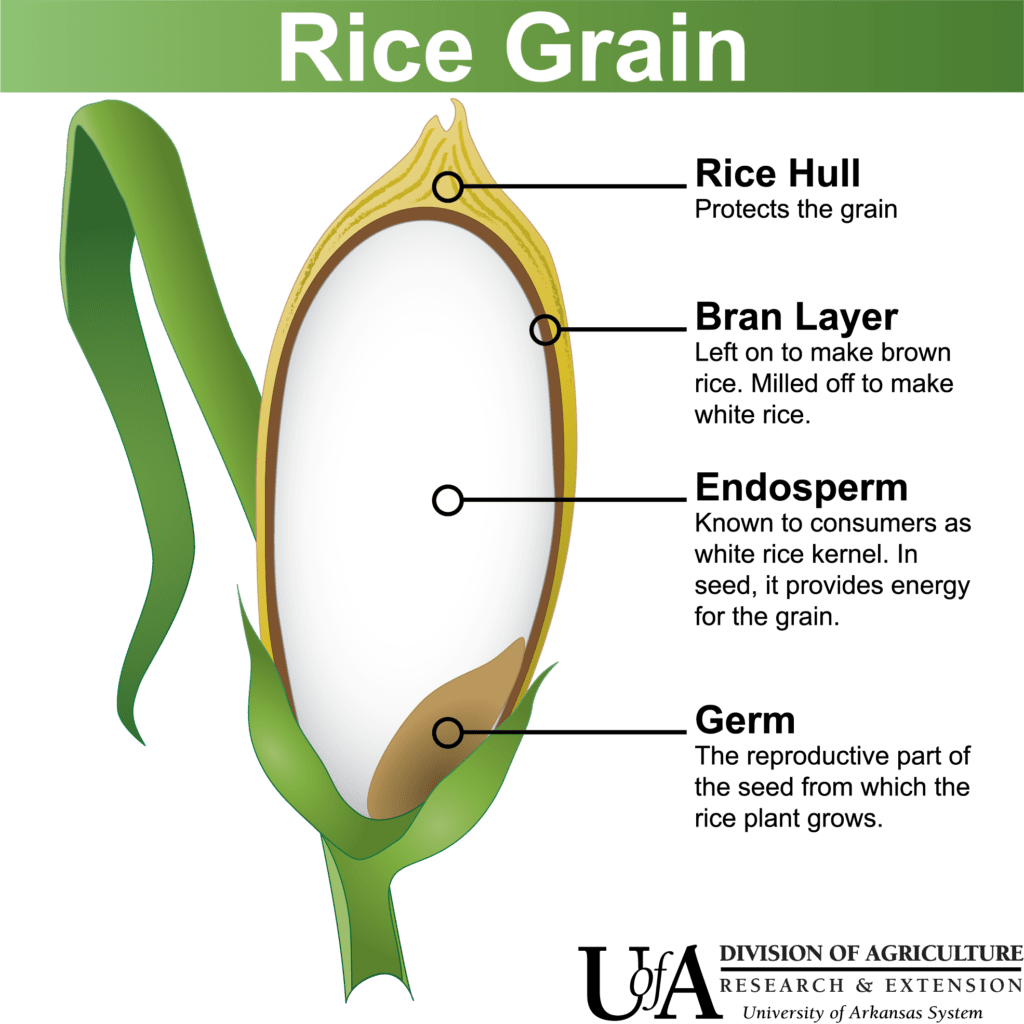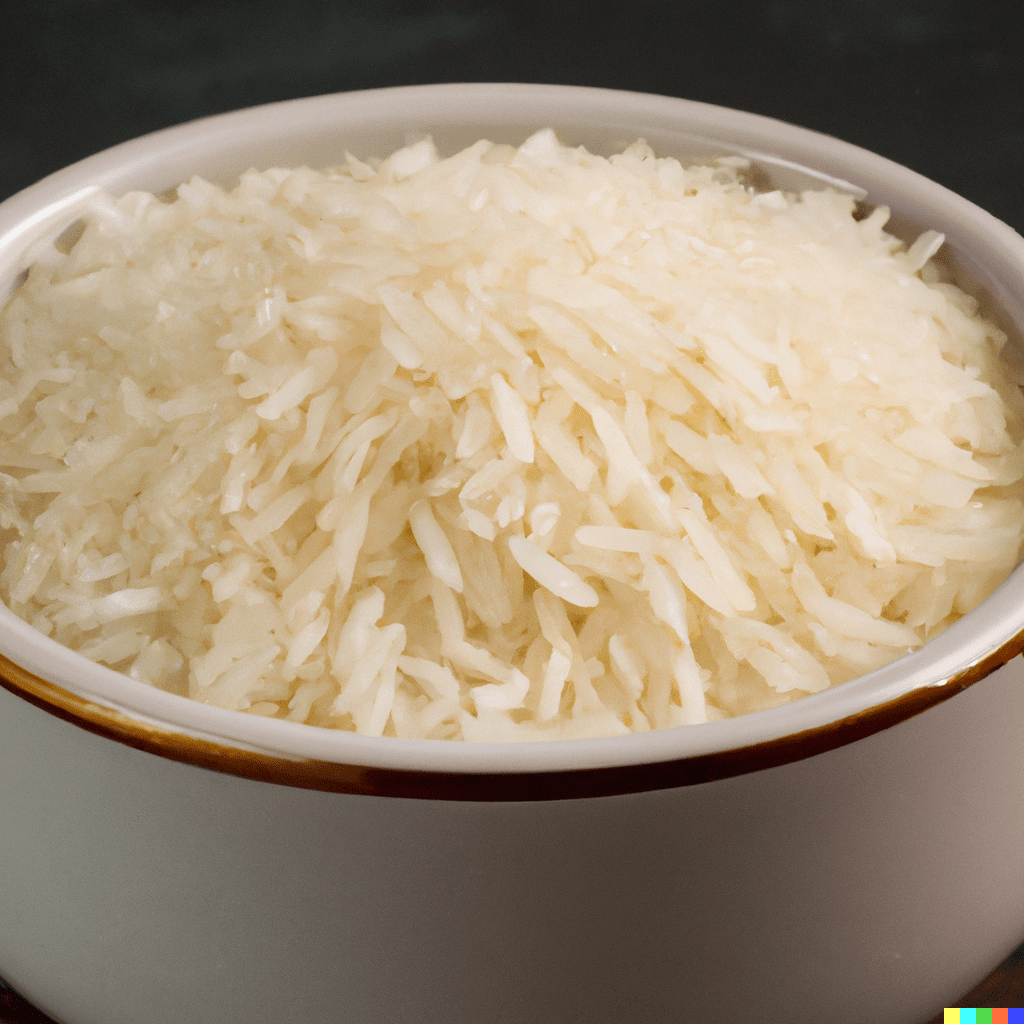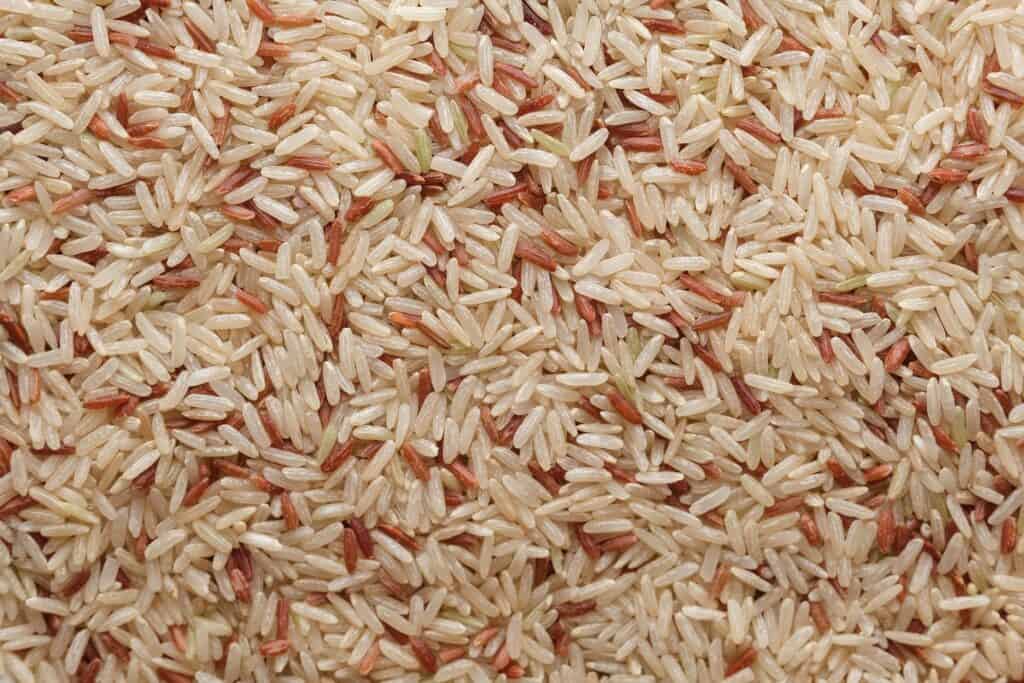Urinary tract infections (UTIs) are infections of the urinary system, as the name implies, and one thing that infections need in order for us to recover from them or prevent them is a strong and healthy immune system.
Your immune system won’t be thrilled when you eat rice because one kind of food that your immune system hates the most is sugar or carbohydrate-rich foods or foods that can elevate your blood sugar levels very steeply and suddenly.
In UTI, your urinary system needs rehydration as much as it can get, and rice can actually do the opposite of that and dehydrate your urinary system and body, so your bladder won’t like it either when you eat rice, especially not when you have a UTI.
Join us in this article as we are going to talk about white rice, brown rice, pregerminated brown rice and other kinds of rice and their impacts on people who suffer from UTI, so stay tuned.

Originally, rice isn’t bad, and it has enough healthy bioactive compounds to balance blood sugar and not cause any metabolic issues like diabetes in the long run.
In its raw and natural form, rice has a lot of healthy and beneficial compounds, like flavonoid compounds, vitamin E and others, and these compounds could have made rice a kind of food that can be consumed by most people, including people with UTI.
However, milling and other kinds of processing rid rice of almost all of its nutritional value, rendering it with only the starch and carbohydrate content that made rice the highly glycemic kind of food that we know of today.
This is how white rice is made, while brown rice is closer to the natural form of rice because it only has the hull layer removed while the bran and germ parts of the whole rice grain remain intact.
These parts of rice that get removed with white rice and are kept with brown rice contain a lot of vitamins, minerals, fiber and other important compounds as we said.
However, the disadvantage to brown rice is the presence of Arsenic and phytic acid, although Arsenic is not present to the degree that would raise concerns about it with brown rice, especially if the rice was consumed moderately.

Is rice good for UTI?
We will now mention different types of rice varieties and talk about how each one of them impacts people who have UTI.
Is white rice good for UTI?
The major detriments that white rice is going to bring on people who suffer from UTI can be summarized in two words, and these words are dehydration and immune system compromisation.
Based on its composition, which lacks for key nutrients, like vitamins, minerals, fiber, phytochemical compounds and others, we can surely predict that white rice is going to be bad for people who have a UTI.
White rice is almost completely made out of starch (carbohydrates), and it has meager amounts of fiber to compensate for this high starchy content.
Fiber in foods usually prevents some of the carbohydrate, sugar or starch content from being absorbed into the body or delays its absorption.
So, foods that contain small amounts of fiber, like white rice, are going to have most of their carbohydrate content delivered right into the bloodstream without anything to hamper or slow it down.
This can cause sudden spikes in blood sugar levels, which can prove to be extremely dangerous, especially for diabetic people.
But what does that have to do with UTI?
Well, first of all, diabetes is one of the main risk factors for developing a UTI and for having it come back every now and then (recurrent urinary tract infections or chronic UTIs).
Also, people with diabetes are going to have a much more difficult time curing a UTI than otherwise healthy people. The point is that diabetic people are more susceptible to infections, like urinary tract infections (UTIs).
It all has to do with those blood sugar spikes that come from food and the inability of these patients to control their blood sugar in the long term.
This can have a wide range of detrimental effects on the body including causing the immune system to work in an ineffective or subpar manner among other effects.
This weakened state of the immune system can be the basis for infectious organisms to exploit the situation and invade the urinary tract and cause a urinary tract infection (UTI). More information about this is in this article.
Not just for diabetic people.
But, also for healthy people, having their blood sugar level elevate dramatically from white rice is also going to impact their immunity in a negative way.
Mainly, if the body receives a high amount of sugar into the bloodstream in a short amount of time, which may come from eating white rice, this will trigger the immune in an unhealthy way causing low-grade inflammation throughout the body. See this research.
If an invading organism, like the E. coli bacteria for example, enters the urinary tract of a body that is going through a state of low-grade inflammation, what do you think will happen?
The E. coli bacteria’s job of replicating and making a urinary tract infection will be much easier.
Also, the immune system would be much more prone to making an over-exaggerated inflammatory reaction to the infection that would end up hurting the bladder or urethra or kidneys more than helping them get rid of the actual bacteria.
So instead of capably eliminating the infection, it would make an inflammation that would exacerbate the situation, causing more UTI symptoms and damage.
People who have a healthy immune system would also have an immune or inflammatory response to a UTI, but it just won’t be severe enough to cause extreme damage to the bladder, the kidneys and other parts of the urinary tract.
A healthy immune system would also have a better ability to distinguish between actual invading bacteria, like the E. coli bacteria, and the body’s own tissues, so it won’t cause extreme damage to them even if the infection was serious.
However, people who have been compromising their immune system by eating white rice, especially on a chronic basis and not as a small part of a healthy and varied diet, will risk that their immune system won’t function properly against infections. See this study.
Especially, if it would be eaten on daily basis as a staple food that people depend on to get energy.
So, for people who suffer from UTIs on a constant basis, I would advise them to reduce their white rice intake as much as possible, and when they eat it, they should eat it only in small portions and with a lot of vegetables, greens and maybe fish and other kinds of healthy food.
It’s also not advisable to eat white rice at the time of going through a UTI episode.
Additionally, most of the white rice people eat is going to turn into sugar in their blood, and this is going to expose the body to the risk of dehydration.
For each sugar molecule that is going to enter the bloodstream, the body is going to spend water (H2O) molecules to process that sugar molecule and to achieve equilibrium state in the blood.
So, if someone eats a bowl of highly glycemic white rice at the same time of having a UTI, their body is going to spend a lot of its water reserves on that recently ingested starch and sugar, and that is going to make it less hydrated and more dehydrated.
Dehydration is the last thing you want when having a UTI as it has a wide range of detrimental effects on UTI patients, so please try and avoid it at all costs if you suffer from a UTI. See this article where we heavily concentrate on dehydration and its effects on UTI patients.
Note: long grain white rice (not to be confused with basmati white rice) and Jasmine white rice are essentially the same as regular white rice in terms of their nutritional value, so what applies to regular white rice applies to them.
How to attenuate the negative effects of white rice on UTI sufferers?
To mitigate some of the detrimental effects that white rice has on health in general and on people who have a UTI, it is best to eat white rice in small proportions and as a part of a vitamin, mineral and fiber-rich diet.
Those healthy compounds will work on delaying the carbohydrate content absorption in the body and on metabolizing it in the best way possible so that it won’t cause any damage to the immune system or body in general.
But, like we said, it’s best to avoid white rice if you have a UTI.
Is basmati white rice good for UTI?

Basmati white rice is slightly different than regular white rice in that it has a lower glycemic index than regular white rice, and that’s what makes it a little bit healthier, especially for diabetes patients and even for UTI patients.
In comparison, Basmati rice, in general, has a glycemic index of between 56 – 69, while regular white rice has a destroying glycemic index of 89.
This can be attributed to the fact that basmati white rice has more fiber in its composition than regular white rice.
I believe that now you can see why the Basmati white rice variety is more preferable for UTI people.
Both regular white rice and Basmati white rice have similar amounts of vitamins, minerals and other nutrients, but the basmati version has a relatively higher amount of fiber.
The lower glycemic index of Basmati white rice would result in it not causing those rapid spikes in blood sugar levels, and it would also release lower amounts of glucose in total into the bloodstream than normal white rice.
This would lower the risk of dehydration and immune system compromisation for people who suffer from UTI.
That’s why I won’t advise against eating small and only small amounts of Basmati white rice as part of a healthy and varied diet for people who are experiencing a current urinary tract infection episode.
For people who want to prevent UTI, it is also not contraindicated to eat Basmati white rice maybe two to three times a week but also in moderate portions.
Is brown rice good for UTI?

In my opinion, brown rice could potentially be good for health and UTI prevention because of the abundance of minerals, vitamins, phytochemical compounds and fibers in this kind of rice.
The only issue with brown rice is the phytic acid content, and that can be reduced with a soaking and fermentation technique that you can look for on the internet.
Because of phytic acid people should only eat small amounts of that kind of rice since in small proportions, phytic acid won’t be that harmful to the body, but on the contrary, it will be healthy and beneficial.
Phytic acid prevents the absorption of some key nutrients like iron, zinc and calcium, especially if ingested at a higher-than-normal amount.
Phytic acid would bind to those minerals if it was present with them in the digestive tract at the same time and at the same meal, and it would form a chelation complex with them, preventing them from being absorbed into the bloodstream.
Your body would be at its most need for those kinds of minerals and nutrients to fight UTI, so this is why it’s best to avoid brown rice and phytic acid at the time of going through a UTI episode or if you want to prevent UTI.
It’s also advisable to try and reduce the phytic acid content by using a soaking and fermentation technique that involves soaking brown rice in lukewarm water for about 24 hours and then taking 10% of that soaking water and reserving that for the next time you cook brown rice.
The next time you want to cook brown rice repeat the same process but add that reserved 10% of water from the last time to the new soaking water and repeat this process for every time you cook brown rice.
Using this method will reduce the phytic acid content of brown rice to a large extent, which would give access to its nutritional value.
You can look the full method on the internet.
So, because your body will be able to absorb all of those immune enhancing, anti-inflammatory and antioxidant vitamins, minerals and phytochemical compounds that brown rice contains, I can say that eating phytic acid content-reduced brown rice is going to be beneficial for UTI patients and for UTI prevention.
Note: Brown jasmine rice is also almost the same as regular brown rice and you also need to cook it in the specific way that I told you about to reduce the phytic acid content before you can leverage its nutritional benefits.
Is pre-germinated brown rice good for UTI?
On the other hand, Germinated brown rice can be considered as the best type of rice health-wise. This kind of rice retains all of brown rice’s nutritional value with less of the so-called antinutrient content of phytic acid.
Pre-germinated brown rice is better than regular brown rice because it contains even much less of that so-called antinutrient due to its preparation technique. See this study.
You can even make it from home, and I think it can be bought in the USA and European markets too.
How much rice should people with UTI eat?
For people who are experiencing a current UTI episode, I do not advise them at all to eat white rice, while for the purpose of UTI prevention, I advise people to eat white rice no more than once or twice a week and not to exceed 100 grams each time.
For diabetic patients who also have a UTI, I advise them to eat even less than that.
Although more research needs to be done on brown rice, the evidence is quite clear that it has a great nutritional value that can benefit UTI patients, but these patients cannot get access to it because of the phytic acid content, so I especially do not advise UTI patients to eat brown rice.
But for phytic acid content-reduced brown rice or pre-germinated brown rice, the situation is kind of different.
For that type of rice, people with UTI can be freer to try it and moderately incorporate it into their diet even if they also have diabetes and even if they are experiencing a current UTI episode, but don’t get too freaky on it because we need to do more research.
Does rice increase diuresis?
On the contrary, rice (especially white non-basmati rice) is almost completely made out of starch or carbohydrates, and these molecules are going to turn into sugar in your blood.
As we said earlier, this is going to drain the body’s water reserves, and it is going to expose it to the risk of dehydration, which is going to prompt the bladder to urinate even less.
This is, by the way, another detriment that eating rice can bring upon people who suffer from UTI because urinating high amounts of urine (not to be confused with micturition or frequent urination which are all UTI symptoms) is going to help their bladder flush out the UTI-causing bacteria and expel it out of the body.
Does rice increase inflammation, thereby worsens UTI?
Of course, it does. although white rice is enriched with some vitamins and minerals that it has been deprived of because of the removal of its germ and bran layer, those few added minerals like iron and zinc are not going to restore its lost nutritional value.
Whole grain rice like brown rice reserves all of the grain’s nutritional value in addition to phytic acid, of course, so just removing the phytic acid content will unlock all of this rice’s important nutritional benefits.
White rice does not have most of those removed vitamins, minerals, fibers and phytochemical (flavonoid) compounds.
These are the crucial compounds that are going to fight inflammation and oxidative stress in the body, and they also can help metabolize the carbohydrate content that we consume in our meals without causing improper triggering of the immune system.
So in the case of their absence, which is what happens when people eat white rice, the body would not get the protection that these nutrients provide against inflammation and oxidative stress.
This also further contributes to increasing people’s susceptibility to infections like the urinary tract infection (UTI).
Is white rice good for the bladder? does it cause bladder agitation?
Inflammation means agitation, and in fact, inflammation is responsible for most UTI symptoms, which include bladder agitation that causes urinary frequency, hesitancy, micturition and other UTI symptoms.
White rice increases the urinary tract’s susceptibility to infections and inflammations, and that can inflict damage on bladder walls and muscles, which could be irreversible or long-lasting if it’s not dealt with properly.
Other kinds of rice and UTI
As for other lesser-known kinds of rice, like black rice, red rice, purple rice, and others, we do not have the space to talk about them here in this article, so if you want me to make a separate article for them contact me on my Email. You can find it in the contact us page.
So, that was all we had to share about this subject see you soon and have a great day
